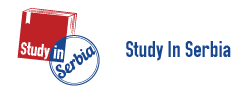How to Apply - 12 steps to study in Serbia

Studying abroad is a life-changing experience, offering the opportunity to immerse yourself in a new culture while also getting a degree. Although it might seem daunting at first, studying abroad is easier that it first appears. To help you navigate this exciting process, we've outlined 12 detailed steps to study in Serbia, from choosing the right programme to thriving in your new academic environment.
Find a suitable programme
Finding the right programme is the first step to studying in Serbia. To find a suitable programme, visit the Study in Serbia database at studyinserbia.rs where you can explore a comprehensive list of accredited study programmes or check out the Study in Serbia catalogue. It is important to note that all study programmes and higher education institutions featured in this catalogue are accredited, which means they meet specific quality requirements for accreditation set up by the relevant authorities in the Republic of Serbia.
Check academic requirements
Once you have identified you preferred programme, the next step is to the next step is to check the academic requirements for admission. Requirements may vary depending on the level of study, programme and institution of your choice. In general, for a bachelor’s programme you need a four-year secondary school diploma and to pass the entrance exam. For a master’s programme you need a bachelor’s degree that comprises 180 ECTS credits (3-year full-time studies) or 240 ECTS credits (4-year full-time studies) and to pass the entrance exam. For PhD programmes both a bachelor’s and a master’s degree are required (a minimum of 300 ECTS credits in total).
Check the application procedure and deadlines

Understanding the application procedure and keeping track of deadlines is important for a smooth application process. Usually, undergraduate admissions begin in June, while master’s and PhD programmes start their intake in September or October. However, deadlines can vary from one institution to another and even between programmes within the same institution. Visit the websites of your chosen higher education institutions to get detailed information about the application process and deadlines.
Get in touch with the higher education institution
If you have any questions or need further clarification about a study programme, do not hesitate to contact the higher education institution directly. Most universities have an international office dedicated to assisting prospective students. You can find their contact information in the Study in Serbia catalogue or email us at studyinserbia@tempus.ac.rs if you need any additional help.
Prepare necessary documents and apply
Application documents usually include a completed application form, a copy of the passport or ID, transcripts of records and/or proof of acquired academic qualifications, confirmation of application fee payment etc. Check with your chosen institution for the specific list of required documents. Keep in mind that some documents may need to be translated and certified so start preparing well in advance. You can usually submit these documents electronically or by post.
Get your diploma(s) recognised
If you are applying for a bachelor’s programme, your high school diploma should be recognized by the ENIC/NARIC Centre (azk.gov.rs/enic_naric.php). For students continuing their studies at the postgraduate level, contact the chosen institution (university or academy) to start the recognition process of your previous degrees. This process can be time-consuming, so reach out to the relevant institutions well in advance.
Take and pass an entrance exam

To enroll in a university or college in Serbia, you will likely need to take and pass an entrance exam. These exams are usually held in June for undergraduate and in September or October for postgraduate studies. There is not one universal test all candidates need to take – entrance exams differ from programme to programme.
Formally enrol and pay the tuition fee
Once you pass the entrance exam, you need to complete the enrollment process. This includes submitting proof of tuition fee payment along with other necessary documents, such as the certificate stating that your previously earned degrees are recognised in Serbia. Tuition fees should be paid in full, but some institutions offer the possibility of paying in instalments.
Apply for a visa
Most international students need a visa to enter Serbia for their studies and entrance exam, so make sure to check the visa requirements to determine if you need a visa. If you do need a visa, fill in the visa application form and submit it to the nearest Serbian embassy or consulate along with the rest of the required documents. Once you receive a conditional acceptance letter from your university, use it to apply for a type D (long-term) visa. If you are granted a type D visa, you need to apply for a residence permit after you arrive in Serbia.
Find accommodation

Securing accommodation is a crucial step in ensuring a comfortable stay in Serbia. You can choose to rent an entire flat or share it with other students. Start looking for accommodation well in advance to find a place that suits your needs and budget or contact the International Office at your university or faculty to check if they can assist you in finding a place to stay. You can also explore online platforms and student forums for housing options. Consider factors such as proximity to your university, transportation links, and the availability of amenities when choosing your accommodation.
Apply for a temporary residence permit
International students must apply for a residence permit upon their arrival in Serbia, which needs to be extended annually. For detailed information on the application process for a residence permit check out this post on our website.
Study and enjoy student life
With all administrative tasks completed, it’s time to enjoy student life in Serbia. Make sure to go to classes regularly since class attendance is mandatory and you are allowed to skip just a few sessions per semester. Don’t forget to get a student card to receive discounts for different goods and services, including transportation, restaurants, museums and cafes. Student cardholders can also dine in student canteens at discounted prices. Join student organisations to make new friends, learn about Serbian higher education and have fun, and take advantage of the opportunity to travel and explore Serbia and neighboring countries.
If you need any help during your stay in Serbia, visit the Info Centre for international students in Belgrade, 39/I Terazije, or send us an e-mail to studyinserbia@tempus.ac.rs.




